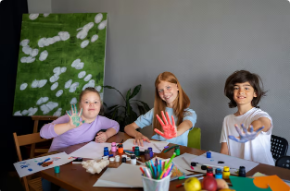Introduction
In today’s rapidly changing world, creativity has become an essential skill for personal and professional success. As educators, teachers play a crucial role in nurturing and developing creativity in their students. This article explores the importance of creativity in education, the role of teachers in fostering creative thinking, and practical strategies for encouraging creativity in the classroom.
The Importance of Creativity in Education
- Enhancing Problem-Solving Skills
- Creativity enables students to think outside the box and approach problems from different angles. This leads to innovative solutions and enhances critical thinking skills.
- Fostering Innovation
- In a world driven by technological advancements and innovation, creativity is a key driver of progress. Encouraging creative thinking in students prepares them to be future innovators and leaders.
- Boosting Academic Performance
- Research has shown that creative activities can improve students’ engagement and motivation, leading to better academic performance. Creativity also enhances cognitive abilities, such as memory and comprehension.
- Promoting Emotional Well-being
- Creative expression allows students to explore and communicate their emotions, reducing stress and promoting mental well-being. Activities like art, music, and writing provide healthy outlets for emotional expression.
The Role of Teachers in Fostering Creativity
- Creating a Safe and Supportive Environment
- A classroom environment that encourages risk-taking and values diverse perspectives is essential for fostering creativity. Teachers should create a safe space where students feel comfortable sharing their ideas without fear of judgment.
- Encouraging Curiosity and Exploration
- Teachers can stimulate curiosity by encouraging students to ask questions, explore new ideas, and pursue their interests. Providing opportunities for hands-on learning and experimentation helps students develop a love for discovery.
- Incorporating Creative Teaching Methods
- Using creative teaching methods, such as project-based learning, storytelling, and role-playing, can make lessons more engaging and inspire students to think creatively. These methods also help students connect with the material on a deeper level.
- Modeling Creative Behavior
- Teachers should model creative thinking and behavior in their own teaching practices. By demonstrating flexibility, openness to new ideas, and a willingness to experiment, teachers can inspire students to adopt a creative mindset.
Practical Strategies for Encouraging Creativity in the Classroom
- Integrate Arts into the Curriculum
- Incorporating arts into various subjects can enhance creativity. Activities like drawing, painting, music, and drama provide students with alternative ways to express their understanding and ideas.
- Use Open-Ended Questions and Assignments
- Open-ended questions and assignments encourage students to think critically and explore multiple solutions. This approach fosters creativity by allowing students to express their unique perspectives and ideas.
- Implement Project-Based Learning
- Project-based learning involves students working on projects over an extended period, allowing them to explore real-world problems and develop creative solutions. This method promotes collaboration, critical thinking, and creativity.
- Encourage Collaborative Learning
- Group activities and collaborative projects help students share ideas and learn from each other. Collaboration fosters creativity by exposing students to different viewpoints and encouraging teamwork.
- Provide Choice and Autonomy
- Giving students the freedom to choose their projects, topics, or methods of learning can boost creativity. Autonomy encourages students to take ownership of their learning and pursue their interests.
- Create a Flexible Classroom Environment
- A flexible classroom environment with movable furniture and various learning stations can stimulate creativity. Allowing students to work in different spaces and configurations promotes dynamic and creative learning experiences.
- Incorporate Technology and Digital Tools
- Technology and digital tools can enhance creativity by providing new ways to explore and create. Tools like digital storytelling, graphic design software, and coding platforms offer innovative opportunities for creative expression.
- Encourage Reflection and Feedback
- Regular reflection and feedback help students understand their creative process and identify areas for improvement. Encouraging students to reflect on their work and provide constructive feedback to peers fosters a growth mindset and continuous improvement.
Challenges and Solutions
While fostering creativity in the classroom is essential, it comes with challenges such as standardized testing, rigid curricula, and limited resources. Solutions to these challenges include:
- Balancing Creativity and Standards: Integrating creative activities that align with curriculum standards can help balance creativity and academic requirements.
- Professional Development: Providing teachers with professional development opportunities focused on creative teaching methods and strategies can equip them with the tools they need to foster creativity.
- Advocacy and Support: Advocating for policies and resources that support creative education can help overcome systemic barriers. Building a network of support among educators, parents, and the community is also crucial.
Conclusion
Creativity is a vital skill for the 21st century, and teachers play a pivotal role in nurturing and developing this skill in their students. By creating a supportive environment, encouraging curiosity, incorporating creative teaching methods, and providing practical strategies for the classroom, teachers can foster creativity and prepare students for a dynamic and innovative future. Despite the challenges, the commitment to fostering creativity in education is essential for developing well-rounded, innovative, and emotionally healthy individuals.











